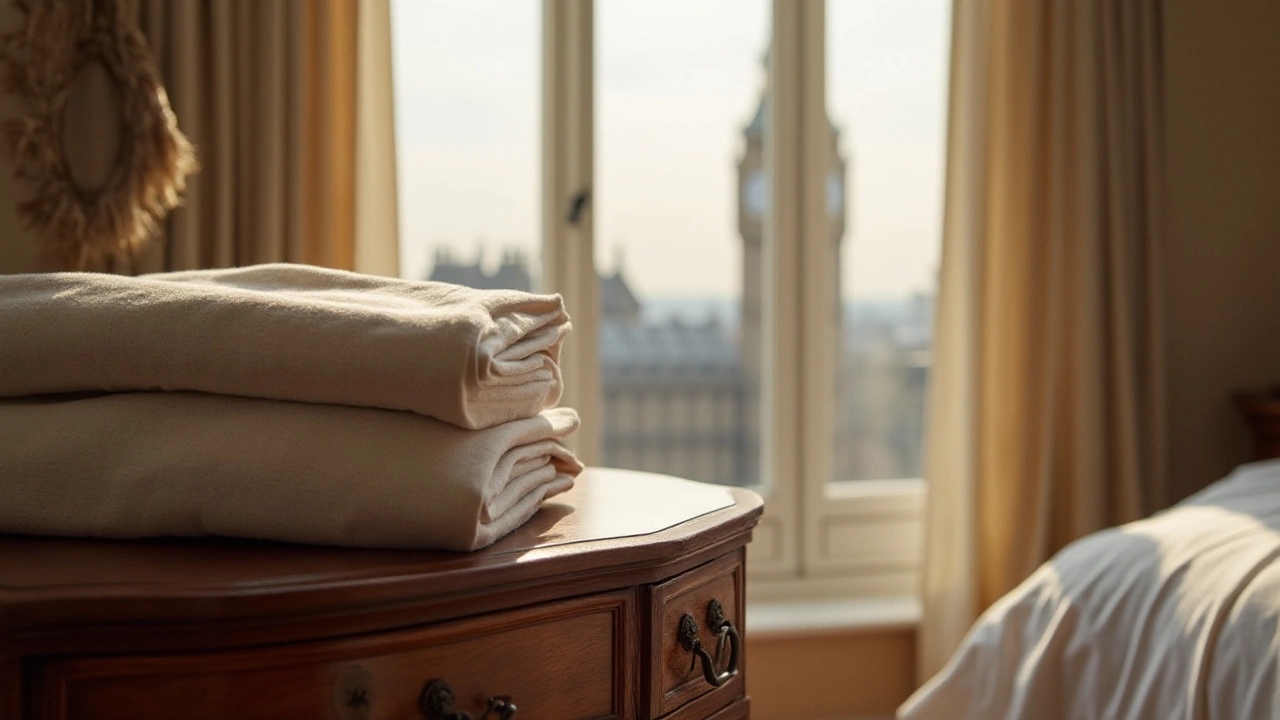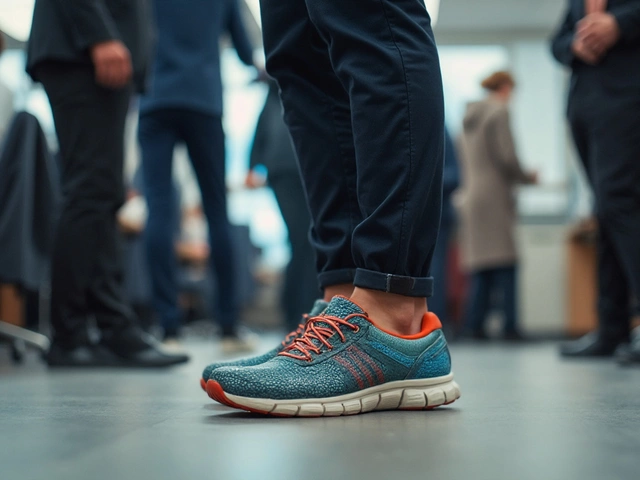Cotton t-shirts are a staple in almost everyone's wardrobe, valued for their soft touch and breathable comfort. Yet, not all cotton is created equal, and understanding what distinguishes high-quality cotton can greatly impact your purchasing decisions. With a variety of cotton types available, each offering its unique mix of characteristics, it can be a challenge to choose the ideal one for your t-shirts.
From the plush feel of Pima cotton to the luxurious texture of Egyptian cotton, different types bring varied benefits. In this guide, we will dive into the essential qualities that define superior cotton fabric. We’ll explore how these differences affect comfort, durability, and the overall wearing experience, equipping you with the knowledge to invest wisely in your next cotton t-shirt.
- Understanding Cotton Varieties
- Key Characteristics of High-Quality Cotton
- Pima Cotton: Softness and Durability
- Why Egyptian Cotton is a Contender
- Blends and Other Alternatives
- How to Care for Your Cotton T-Shirts
Understanding Cotton Varieties
Cotton, renowned for its softness and breathability, is harvested from the seeds of the cotton plant and spun into fabric. When it comes to selecting the right cotton for your t-shirts, understanding different varieties is crucial. While there are over fifty species of cotton, only four are widely cultivated, each offering a palette of unique attributes. The primary types grown for commercial clothing are Upland, Pima, Egyptian, and Asiatic cotton. Each one is characterized by the staple length of its fibers, directly impacting the quality of the fabric produced.
Upland cotton, which dominates the global market, accounts for approximately 90% of the world's production. Known for its short to medium staple fibers, Upland is more affordable but less durable and soft than its longer fiber counterparts. Transitioning to long-staple varieties, Pima cotton offers greater softness and strength thanks to its extended fibers that enable a tighter weave, making it less prone to fraying and pilling. Similarly, Egyptian cotton, a luxury variety, boasts long fibers that render it extraordinarily soft and strong. This type is often reserved for premium garments and bedsheets, highly esteemed for its plush feel.
As we dive into these subtle differences, it’s interesting to note how regional climates and soil conditions affect cotton varieties.
According to the International Cotton Advisory Committee, regional conditions influence the cellulose content of the cotton fiber, which in turn affects the fabric's strength and dye absorption capabilities.This explains why cotton from certain regions feels different, despite being from the same plant species.
In addition to understanding staple length, it's important to consider how cotton is cultivated and processed. Organic cotton, for example, is grown without synthetic pesticides or fertilizers, making it a popular choice for environmentally conscious consumers. Although organic cotton is often costlier, its eco-friendly production methods and reduced human toxicity make it a preferred option for many. Moreover, the advent of genetically modified cotton significantly transformed its durability and pest resistance, shaping a major part of today’s cotton industry.
When choosing the right cotton for your next t-shirt, consider how each variety aligns with your needs, whether it's softness, durability, or sustainability you're after. Knowing the facts about cotton is your gateway to selecting garments that resonate with your preferences and values. With such immense diversity in the world of cotton, there truly is something for everyone in this fascinating fabric's spectrum.
Key Characteristics of High-Quality Cotton
Diving into the qualities that define high-quality cotton, we find ourselves delving deeper into the very essence of this beloved fabric. Not only does the inherent quality of cotton impact how a garment feels against the skin, but it also dictates its durability and appearance over time. When considering cotton quality, several factors come into play, such as fiber length, strength, and fineness. Long-staple fibers, for instance, are known for being particularly smooth and silky, contributing to a softer and longer-lasting fabric. This is why you often hear about the superiority of long-staple versions such as Pima and Egyptian cotton.
Cotton fiber's strength is another cornerstone of quality. The stronger the fiber, the more robust and durable the fabric is likely to be. This strength often translates into garments that can withstand the tests of time and multiple washes without losing their form or comfort. Additionally, the fineness of the fiber affects its softness and how well it absorbs dye, which determines the vibrancy and longevity of colors. Good quality cottons tend to have a mesmerizing ability to maintain bright, glorious colors over time, ensuring your favorite t-shirts remain looking new wash after wash.
T-shirts are an essential part of everyday fashion, and their comfort is non-negotiable. High-quality cotton fibers contribute to this comfort through their natural breathability and moisture-wicking properties, allowing your skin to breathe and stay cool. The natural elasticity of these fibers also allows the fabric to stretch and move with your body, adding to their enjoyable wearability. A lesser-known fact is cotton’s ability to regulate temperature, providing warmth during colder days while keeping you cool when it’s warm.
Pioneering textile researcher, Dr. Sandra Lopez, once said, "In the quest for supreme comfort in apparel, high-quality cotton stands out for its unmatched breathability and softness, attributes that truly cater to the needs of modern consumers."
Ethical and sustainable sourcing plays a role too in classifying cotton's quality. Consumers are increasingly aware of and interested in where and how their fabric is produced, leaning towards ethically sourced cotton that supports better environmental and social practices. The certification of cotton, such as the Global Organic Textile Standard (GOTS), can offer consumers an assurance of the cotton's quality, ensuring it was produced without harmful chemicals and under fair work conditions.
In a world where fast fashion is the norm, investing in high-quality cotton means choosing garments that won't easily tear, pill, or fade. This not only assures you of a longer-lived t-shirt but also of a garment that maintains its original beauty and comfort throughout numerous wear cycles. The feel of high-quality, breathable cotton against the skin, coupled with its eco-friendly and fashion-forward benefits, makes it a significant contender for anyone's wardrobe choices.

Pima Cotton: Softness and Durability
Pima cotton, often celebrated as the king of cotton, boasts a remarkable combination of softness and robustness that sets it apart from other cotton varieties. This luxurious fiber originates from the lush landscapes of Peru and the southwestern United States. What makes Pima cotton truly exceptional is its extra-long staple length, which refers to the length of its individual fibers. This increased fiber length plays a crucial role in contributing to the smooth texture and supreme softness that Pima cotton is renowned for, making it a top choice for those seeking premium t-shirts. The longer fibers create fewer fiber ends, resulting in less friction and irritation when in contact with the skin. This quality not only provides unparalleled comfort but also enhances durability, ensuring that garments made from Pima cotton last significantly longer, resisting pilling and fraying over time.
One of the standout aspects of Pima cotton is how it transforms the ordinary t-shirt experience into something truly special. The fabric’s resilience is amplified through its ability to withstand frequent washing without losing its shape or luster. Unlike some other cotton types, Pima cotton becomes even softer with each wash, rather than deteriorating. This attribute allows Pima cotton t-shirts to retain their fresh look and feel even after numerous cycles in the wash. The enhanced durability means that Pima cotton clothing can continue to be loved and worn for years, reducing the need for constant replacements. Cotton quality enthusiasts often rave about the value it offers in both longevity and feel, which is why it has become synonymous with luxury in the clothing industry.
According to a study by the Cotton Incorporated, consumers reported that apparel made with Pima cotton felt significantly more luxurious and softer compared to standard cotton options, with a satisfying weight and texture that holds up to every promise of comfort.
"Pima cotton has consistently proven to be a preferred choice in the premium market segment, offering an exquisite blend of softness, strength, and comfort," noted a spokesperson from Cotton Incorporated.This captivating allure of Pima cotton often leads fashion aficionados to choose it not just for t-shirts, but for a range of high-quality clothing items. Its ability to maintain vibrant colors over time, due to its superior dye absorption properties, adds another layer of attraction for both manufacturers and fashion consumers alike.
An interesting facet of Pima cotton's reputation lies in its sustainable growth practices. Often grown on small-scale farms that prioritize the use of less water and pesticides compared to conventional cotton farming, Pima cotton can be considered a more environmentally friendly option. This sustainability aspect adds to its appeal among eco-conscious consumers who are seeking clothing that aligns with their values. When choosing a Pima cotton t-shirt, one is not only investing in exceptional comfort and durability but also supporting agriculturally and environmentally sound practices. The meticulous cultivation process and natural softness underscore why Pima cotton is held in such high regard.
Why Egyptian Cotton is a Contender
When one thinks of the crème de la crème of cotton, Egyptian cotton often comes to mind. Renowned for its luxurious texture and extraordinary durability, this type of cotton has garnered a premium reputation across the globe. Originating from the fertile Nile River Valley, Egyptian cotton is cultivated in an advantageous environment that provides it with its unique characteristics. Each fiber is longer and stronger compared to typical cotton, which translates into a fabric that is both supremely soft and remarkably resilient over time. This makes Egyptian cotton a preferred choice for those who value longevity and a sumptuous feel in their t-shirts.
But what exactly makes Egyptian cotton stand out in the crowded world of fabrics? It's all about the staples—the length of the cotton fibers. Egyptian cotton has what we call 'extra-long staple' fibers. These fibers contribute to creating smoother and stronger yarn, which in turn leads to fewer breakages. This attribute not only enhances the fabric’s softness but also its resilience against wear and tear. Cotton quality that can withstand the test of time is certainly no minor accomplishment in the fast-paced world of fashion.
Many garment manufacturers swear by Egyptian cotton for its unparalleled durability and comfort. The silky smoothness experienced when wearing an Egyptian cotton t-shirt is unmistakable, providing almost second-skin comfort without sacrificing structure. The breathability of this cotton is another noteworthy merit. In warm climates or during heavy physical activity, Egyptian cotton keeps the wearer cool and comfortable. Its moisture-wicking properties help in evaporating sweat promptly, ensuring that the fabric remains fresh against the skin.
According to a study published in the Journal of Textiles, "The long fibers of Egyptian cotton contribute to textiles with better strength and handles superior to other types." This comes as no surprise, as the practice of harvesting by hand ensures that the fibers are preserved without damage, further enhancing their natural softness and lustre.
Yet the allure of Egyptian cotton isn't solely rooted in physical comfort. There is also a significant aesthetic appeal. The quality of the fabric lends itself to holding dyes exceptionally well, providing vibrant colors that do not wash out easily—offering fashion-conscious consumers a product that retains its look over a prolonged period. With such rich, deep colors being a possibility, designers favor Egyptian cotton for creating visually stunning pieces.
One potential downside faces those who wish to indulge in Egyptian cotton is the price point. Often, this premium fabric commands a higher price compared to regular cotton. Despite this, many consumers find this investment worthwhile. The longevity and quality of Egyptian cotton t-shirts deliver lasting satisfaction, negating the need for frequent replacements that cheaper fabrics often require. In the grand tapestry of textile options, Egyptian cotton remains an undeniable contender, merging timeless elegance with unmatched performance.

Blends and Other Alternatives
When we think about cotton t-shirts, pure cotton may come to mind, but blends are emerging as a popular choice. Blends combine different materials to enhance specific qualities of the fabric, creating t-shirts that address diverse needs. A common blend is cotton-polyester, where the softness of cotton meets the durability and wrinkle-resistance of polyester. This blend is favored especially for athletic wear and casual t-shirts, offering a balance of comfort and low maintenance. The presence of polyester also helps the fabric retain its shape, reducing the shrinkage often associated with pure cotton garments.
Another intriguing blend is cotton-spandex. This combination allows for greater elasticity, making t-shirts more form-fitting and ideal for active lifestyles. The addition of spandex provides that extra stretch, ensuring that your shirt moves with you and retains its shape wash after wash. Cotton quality still plays a crucial role here, as a higher percentage of cotton will typically offer a softer feel against the skin.
The innovations in fabric technology have led to other alternatives too, like cotton-modal blends. Modal is a semi-synthetic fiber made from beech tree pulp, and when mixed with cotton, it results in a very soft and luxurious fabric. It is often praised for maintaining softness even after multiple washes, making it a great choice for those seeking a touch of luxury in everyday wear. This blend also offers increased moisture absorption, keeping you cool and dry throughout the day. In fact, some high-end brands have embraced this blend, quoting their commitment to comfort and durability in everyday apparel.
Lastly, organic cotton is gaining traction as a sustainable alternative in the world of clothing. It's grown without harmful chemicals or pesticides, promoting better environmental practices. Organic cotton blends often maintain the gentle texture of regular cotton but come with the added bonus of being eco-friendly. While sometimes more expensive, the environmental benefits and enhanced softness can be worthwhile investments for environmentally conscious consumers.
Overall, these blends and alternatives provide options tailored to individual preferences and requirements. Whether you're looking for something more durable, stretchy, or environmentally responsible, the world of fabric has something to offer. Choosing the right blend means considering how each component contributes to the overall feel and function of your t-shirts. Understanding these differences can guide you to make smarter, more satisfying apparel choices.
How to Care for Your Cotton T-Shirts
Caring for your cotton t-shirts properly can significantly extend their lifespan, maintaining both their comfort and appearance. The first thing to consider is how you wash these garments. Always separate your t-shirts by color to prevent any dye transfer, which could ruin their look. Use cold water when possible, as it not only conserves energy but also prevents shrinkage and color fading. A mild detergent is sufficient for cleansing, as stronger formulas are only necessary if you're dealing with heavy stains.
When it comes to drying, air drying is the best method to preserve the fabric’s integrity. Tumble drying might be more convenient, but the heat can cause the cotton to shrink and the fibers to wear out more quickly. If you must use a dryer, keep it on a low or medium heat setting. Lay your t-shirts flat or hang them on a drying rack to avoid those annoying fabric creases. For those who prefer wrinkle-free garments, ironing on a low setting while the shirt is still slightly damp works wonders.
Storing your cotton t-shirts also plays a crucial role in their longevity. Folding them properly and stacking them neatly prevents measurement distortion and keeps them in excellent condition. Choosing wooden or padded hangers can help if you decide to hang them instead, as they protect the shirt’s shape better than metal ones, which can lead to puckering at the shoulders.
It's interesting to note how treating stains early on can make a big difference. Applying a small amount of baking soda mixed with water to the affected area can effectively lift many common stains. Allow the paste to sit for a few minutes before washing it as usual. This small step can save your favorite shirt from an unsightly blotch.
According to the International Fabricare Institute, proper fabric care not only contributes to garment longevity but is essential for maintaining the quality and appearance that makes clothes enjoyable to wear.
Preserving the rich texture of cotton fabric ensures your t-shirts offer continual comfort and satisfaction. Regularly following these tips transforms the routine act of washing into caretaking, whereby every step you take protects your wardrobe’s vitality. It’s as much about combining practical techniques with mindful habits—appreciating not just the cotton quality but the role these garments play in your life.





